Types of Concrete Pumps – Concrete pumps are essential construction equipment designed to efficiently transport and deliver liquid concrete to construction sites, providing a precise and controlled placement of the material.
These pumps are commonly used in large-scale construction projects, such as high-rise buildings, bridges, and infrastructure development, where the demand for rapid and accurate concrete placement is crucial.
Concrete pumps come in various types, including truck-mounted pumps, trailer-mounted pumps, and stationary pumps, each catering to specific project requirements and site conditions.
The use of concrete pumps minimizes manual labor and speeds up the construction process, enhancing overall project efficiency and reducing construction timeframes.
Modern concrete pumps are equipped with advanced features, such as remote control operation, high-pressure pumping capabilities, and sophisticated boom systems, making them versatile and adaptable to a wide range of construction scenarios.
Types of Concrete Pumps and Their Uses
Here’s the brief explanation of Types of Concrete Pumps and Their Uses, those are:
Truck-Mounted Concrete Pumps
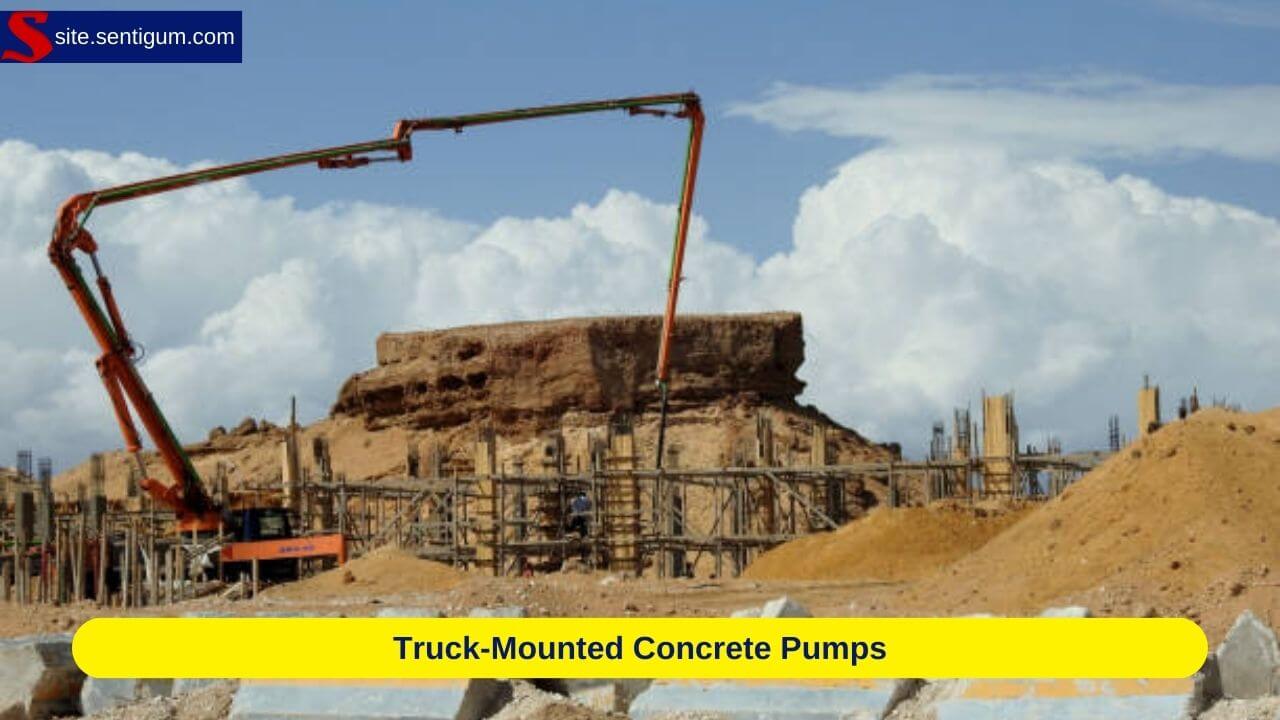
Truck-mounted concrete pumps play a pivotal role in the construction industry by offering a mobile and efficient solution for concrete placement.
These pumps are mounted on trucks, providing the dual advantage of mobility and accessibility to various construction sites.
With their ability to navigate through urban environments and reach challenging locations, truck-mounted concrete pumps are indispensable in large-scale construction projects.
Their telescopic or articulating booms enable precise and controlled placement of concrete, making them particularly valuable in scenarios where flexibility in positioning is crucial.
Whether it’s pouring concrete for high-rise buildings, bridges, or infrastructure development, truck-mounted concrete pumps contribute to increased construction efficiency by delivering a continuous and reliable flow of concrete to the desired locations, reducing manual labor and accelerating project timelines.
Trailer-Mounted Concrete Pumps
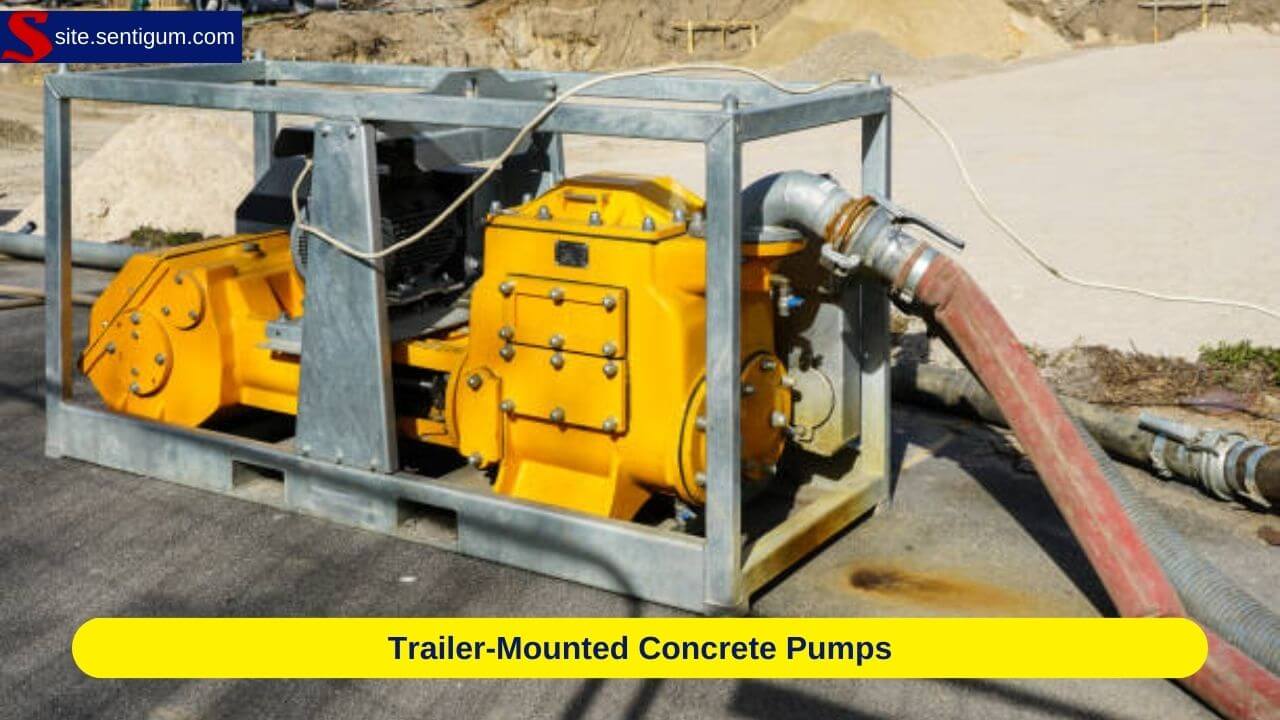
Trailer-mounted concrete pumps serve as a versatile and adaptable solution in construction endeavors, especially in settings where mobility and flexibility are paramount.
Towed behind a vehicle, these pumps are well-suited for smaller to medium-sized construction projects.
Their ability to be easily transported to different sites makes them an ideal choice for locations with varying concrete placement needs.
Trailer-mounted concrete pumps facilitate efficient and precise pouring of concrete, enhancing the overall productivity of the construction process.
Whether navigating through tight spaces or reaching locations with limited accessibility, these pumps offer maneuverability while maintaining the capacity to handle a diverse range of concrete requirements.
With their flexibility and ease of deployment, trailer-mounted concrete pumps contribute to streamlined construction operations, making them an essential asset for projects with dynamic or evolving site conditions.
Stationary Concrete Pumps
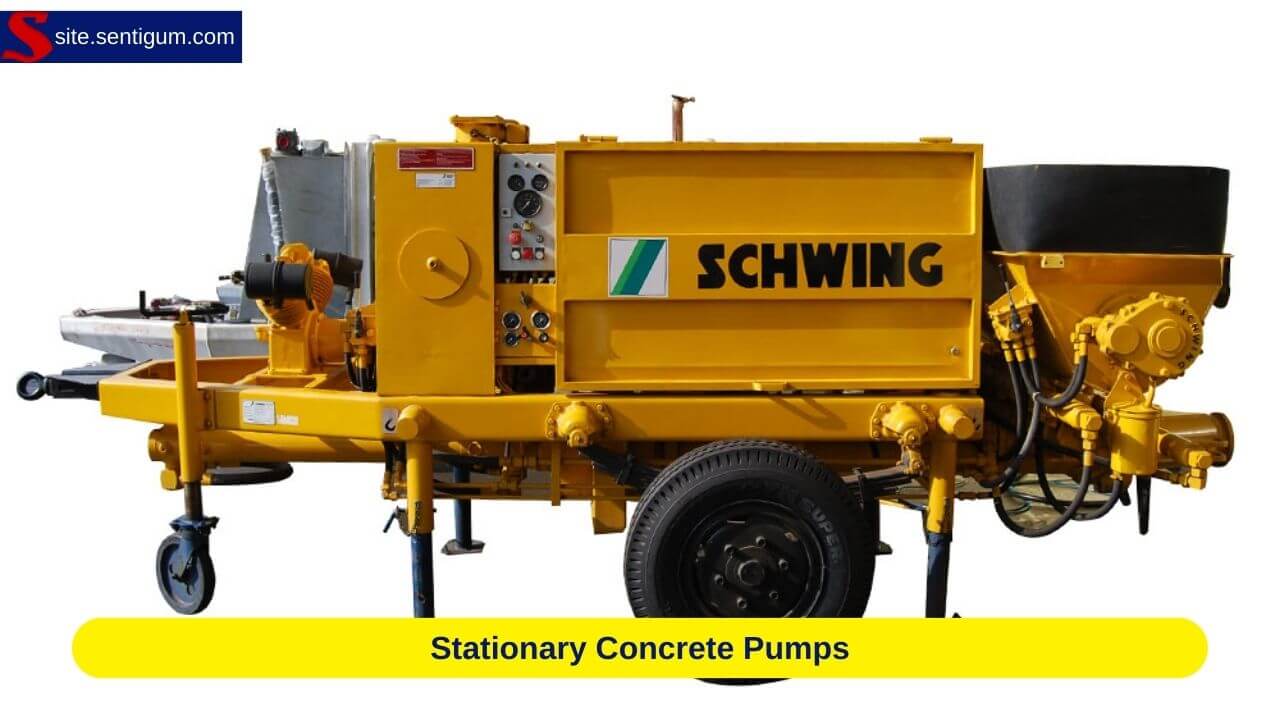
Stationary concrete pumps play a pivotal role in construction projects requiring a continuous and reliable supply of concrete to specific locations.
Fixed in place, these pumps are ideal for large-scale construction endeavors where a consistent flow of concrete is essential.
Connected to a pipeline system, stationary pumps efficiently transport concrete to various points on the construction site, offering precision and control in placement.
They are particularly well-suited for projects with static concrete pouring requirements, such as the construction of massive structures or foundations.
Stationary concrete pumps contribute to project efficiency by eliminating the need for frequent repositioning, allowing for a steady and uninterrupted supply of concrete, ultimately streamlining the construction process and ensuring the uniform quality of the poured material.
Read More: Heavy Equipment Lease Rates You Must Know in 2024
Boom or Truck-Mounted Boom Pumps
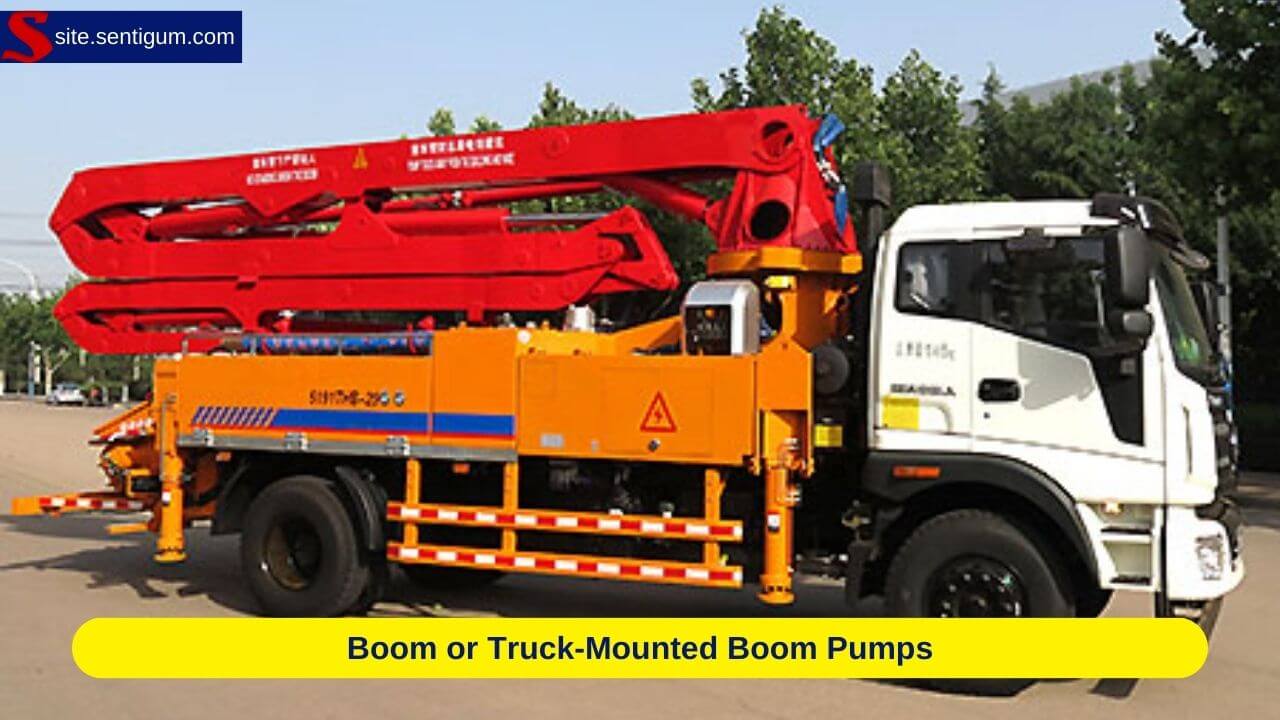
Boom or truck-mounted boom pumps are indispensable in construction projects that demand precise and strategic concrete placement, especially in challenging and elevated locations.
Equipped with extendable robotic arms or booms, these pumps provide unparalleled versatility and accessibility, making them essential for high-rise buildings, bridges, and other structures.
The ability to reach considerable heights and navigate complex job sites allows for targeted concrete delivery, reducing the need for extensive manual labor and optimizing construction efficiency.
The articulating boom can be maneuvered into tight or hard-to-reach spaces, ensuring that concrete is accurately placed where needed.
This type of concrete pump is crucial for projects with intricate architectural designs or elevated construction requirements, offering a combination of reach, control, and adaptability that significantly contributes to the success and precision of the construction process.
Line Pumps
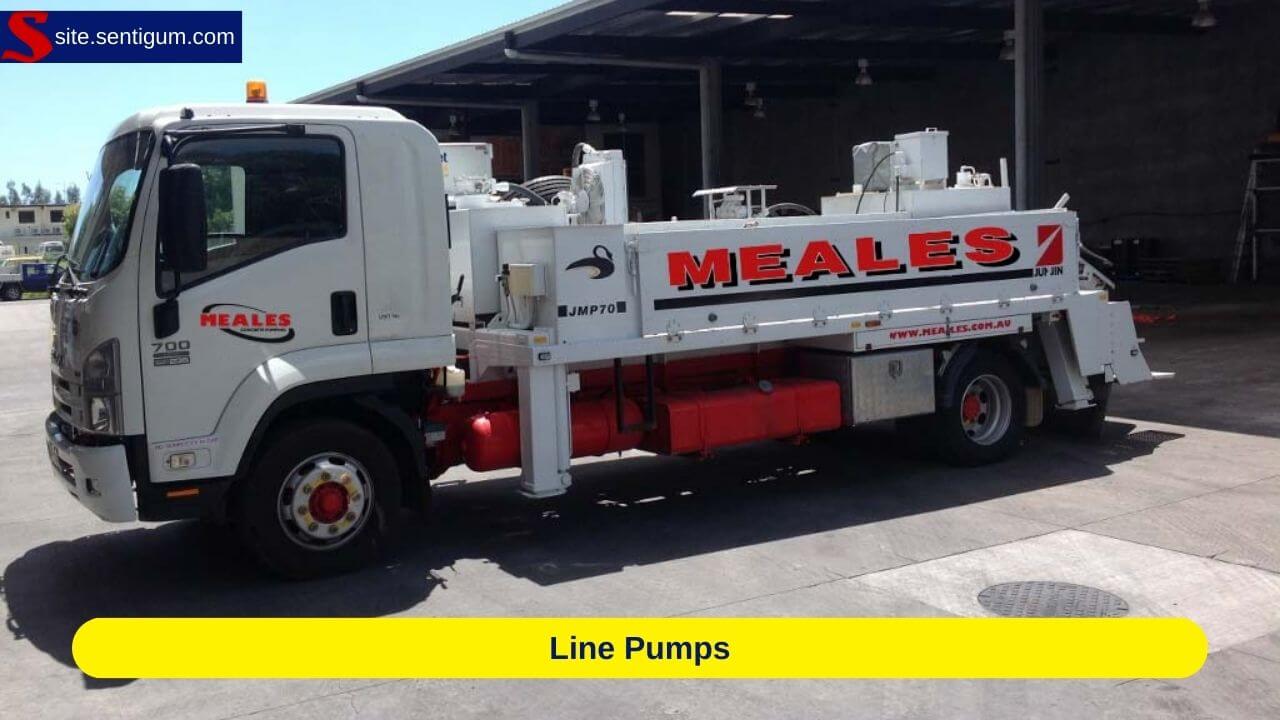
Line pumps play a crucial role in construction projects characterized by the need for horizontal concrete placement, making them especially valuable for residential construction and smaller-scale endeavors.
With their ability to pump concrete over extended distances through a pipeline, line pumps are ideal for projects where flexibility in reaching various points is essential.
These pumps are adept at efficiently delivering a continuous flow of concrete, minimizing the need for manual handling and ensuring a smooth and controlled placement.
Line pumps contribute to construction efficiency by simplifying the logistics of concrete transport, reducing labor requirements, and providing a reliable solution for projects with moderate concrete volume needs.
Their versatility and ease of operation make line pumps an essential tool in the construction industry, particularly for scenarios where horizontal concrete placement is a priority.
Separate Placing Booms
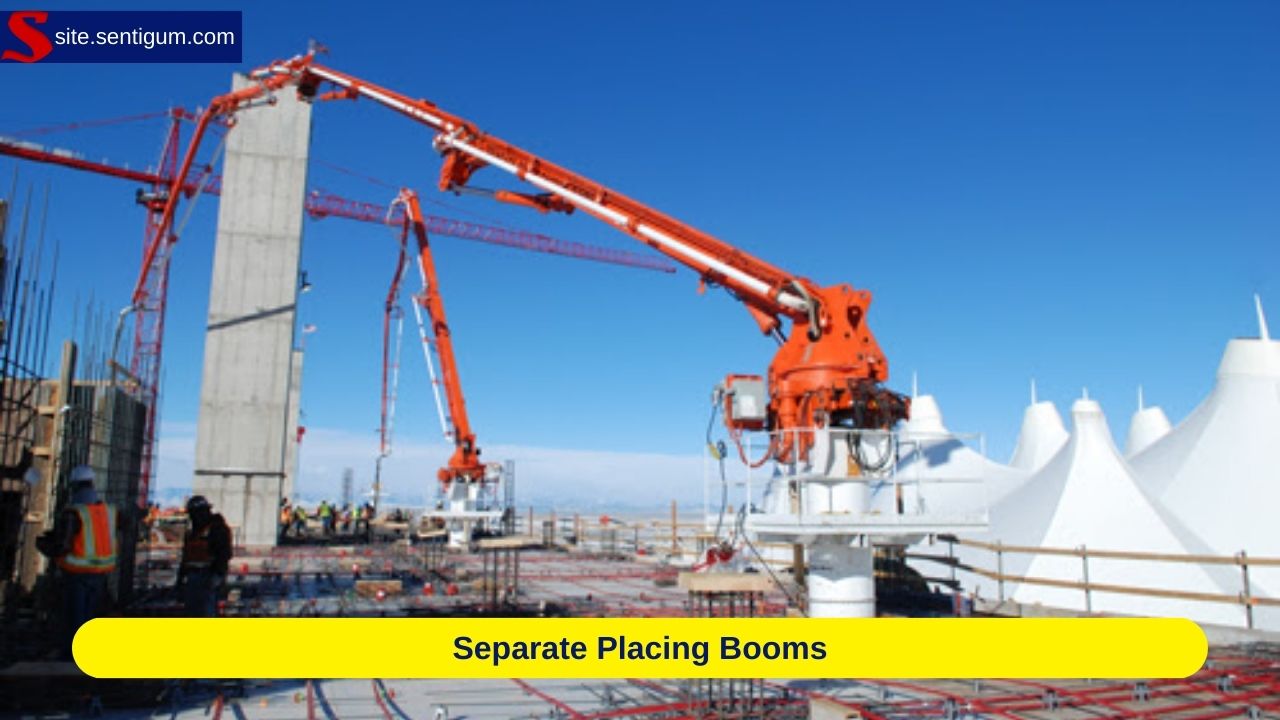
Separate placing booms are specialized concrete pumping equipment designed for projects that require precise and extensive concrete placement in challenging or high-reaching locations.
Unlike truck-mounted or boom pumps, separate placing booms are typically mounted on stationary structures, such as towers or supporting frameworks, allowing for strategic positioning on construction sites.
These booms offer unparalleled reach and flexibility, making them indispensable in large-scale projects like high-rise buildings and complex structures where a truck-mounted pump may face limitations.
Separate placing booms provide a controlled and efficient means of delivering concrete over extended distances and heights, ensuring accurate placement in areas that may be difficult to access with traditional concrete pumps.
This equipment enhances construction efficiency by reducing the need for additional pumping equipment on the ground and facilitating a continuous and reliable flow of concrete to specific locations within the construction site.
Conclusion
In conclusion, the diverse types of concrete pumps available cater to the unique demands of construction projects, showcasing a range of mobility, precision, and flexibility.
Truck-mounted and trailer-mounted concrete pumps offer on-site mobility and adaptability for varying project scales, while stationary pumps provide a continuous and steady supply for larger endeavors.
Boom or truck-mounted boom pumps excel in reaching elevated and intricate construction areas, ensuring precise concrete placement.
Line pumps specialize in horizontal applications, particularly beneficial for residential projects.
Additionally, separate placing booms offer extensive reach and controlled placement in complex structures.
This array of concrete pumping options empowers construction professionals to choose equipment tailored to specific project requirements, ultimately contributing to heightened efficiency, reduced manual labor, and accurate concrete placement across a diverse array of construction scenarios.